In markets
So October turned out to be ‘Uptober’ after all, with Bitcoin increasing 6.2% over the course of the month and Ethereum rising 20%. At the time of writing the overall cryptocurrency market cap was back over the US$1 trillion mark at around A$1.579T (US$1.013T). Bitcoin is up 2% on the same time last week to trade around A$31,950 (US$20,475). Ethereum gained 13% for the week to trade around A$2,470 (US$1,580). XRP was flat but Dogecoin overtook Cardano with a whopping 120% rise, thanks to honorary Dogecoin CEO Elon Musk buying Twitter. Cardano itself rose 10% while Solana gained 12%. The Crypto Fear and Greed Index has finally climbed out of the Extreme Fear zone for the first time in six weeks to sit at 31 or simply Fear.
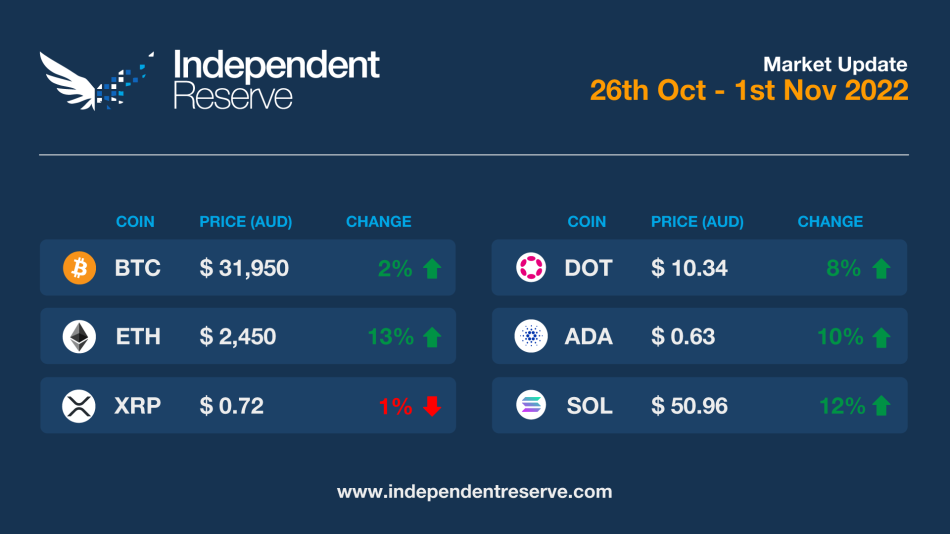
From the IR OTC Desk
This week delivers the US Federal Open Market Committee (FOMC) interest rate decision and press conference. Scheduled for release on Thursday the 3rd of November at 5:00am (AEDT), current market expectation is for a 75bp increase to the federal funds rate. If delivered, this will take the target band to 3.75%-4.00%.
With many of the FOMC participants forecasting interest rates to peak near 4.75%, it would make sense for the FOMC to begin reducing the pace of rate increases, beginning the December meeting. Last week, the market questioned whether this slowing would also coincide with a potential FOMC pivot. So far nothing new has been announced. If the expected path of monetary policy was to deviate, it would be critical to risk asset pricing and certainly something to follow.
As monetary policy reaches its maxima, relative movements in risk assets will likely prove more technical. This is due to the transmission mechanism of inflation, and how the revenue structure of each individual risk asset class is affected – relative to nominal versus real interest rates (the real fed funds rate being defined as the overnight fed funds rate minus the nominal inflation rate). Currently, the short-term interest rate market is forecasting a rate pause beginning circa April 2023. Following, the real Fed Funds rate will likely move higher – as inflation moves lower despite a stable underlying fed funds rate. This may prove an important technical aspect of asset pricing going forward.
In Australia, the 1st Tuesday in November is both the Melbourne Cup and the November Reserve Bank of Australia (RBA) meeting date. In the past, November has been a month of unexpected interest rate moves. Today has proven different however, with the RBA maintaining a modest 25bp increases to take the cash rate to 2.85%. This is despite a forecast for inflation to peak around 8% later this year.
“The Board expects to increase interest rates further over the period ahead. It is closely monitoring the global economy, household spending and wage and price-setting behaviour.”
On the OTC desk, cryptocurrencies have performed particularly well over the month of October, correlating with the NASDAQ which was also up circa 14%. ETH/BTC has remained a good indicator of risk sentiment moving up from 0.06841 to 0.07674 over the course of the month. OTC flows have increased with volatility, however, have continued to appear in bunches. Timing of flow remains aligned to changes in price action. This week, we have seen a particular interest in purchasing layer 1s. While interest in protocol tokens is usually driven by staking returns, the deflationary aspect of ETH, and the new Aptos listing, this time, is driving the new inquiry.
For any trading needs, please don’t hesitate to get in touch.
In headlines
Independent Reserve at Singapore Fintech Festival 2022
Are you looking for a partner to build your digital asset strategy or are you offering digital asset services to your clients? Find us at the Singapore Fintech Festival to learn more about how Independent Reserve can work with you to identify your operating model or integrate our service offerings to your existing operating model. The festival runs from 2nd – 4th November at the Singapore Expo, booth hall 5, BAS Pavilion BAS09.
Dogecoin CEO gets new toy
Dogecoin’s most famous proponent Elon Musk took over Twitter this week with much wailing and gnashing of teeth from the Twiterrati. For crypto people the takeover could be good news, as he’s vowed to clean up the scam bots and his mooted plan to turn it into a super app is likely to involve digital payments according to Bloomberg. Forbes security researcher Jane Manchun Wong tweeted that Twitter is already working on a “wallet prototype” that supports crypto deposits and withdrawals. The big winner of Musk’s social media move was Dogecoin which more than doubled in price on speculation it could become the currency of the platform and may even be used to charge users for tweets. Cardano founder Charles Hoskinson floated the idea that Dogecoin could migrate to live on a sidechain of Cardano.
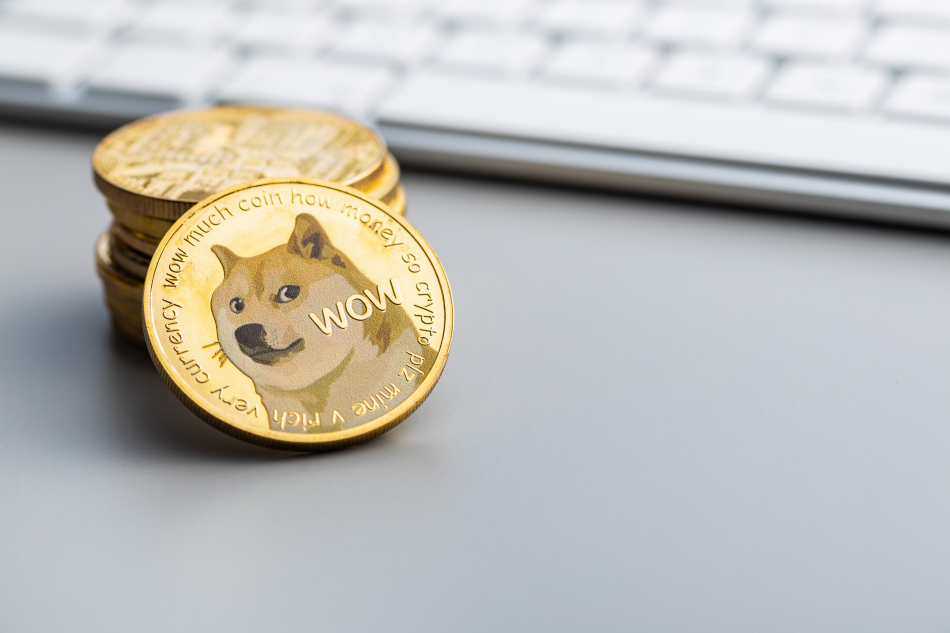
Ethereum’s energy reduced to zip
Despite concerns over increasing centralisation, Ethereum’s move to Proof of Stake has been a massive success in terms of energy efficiency. Prior to September’s merge the Ethereum network used between 46.31 terawatt hours (TWh) to 93.98 TWh of electricity per year. Afterwards that has fallen to an estimated 0.01 TWh and a single Ethereum transaction now uses about the same amount of power as watching two hours of YouTube.
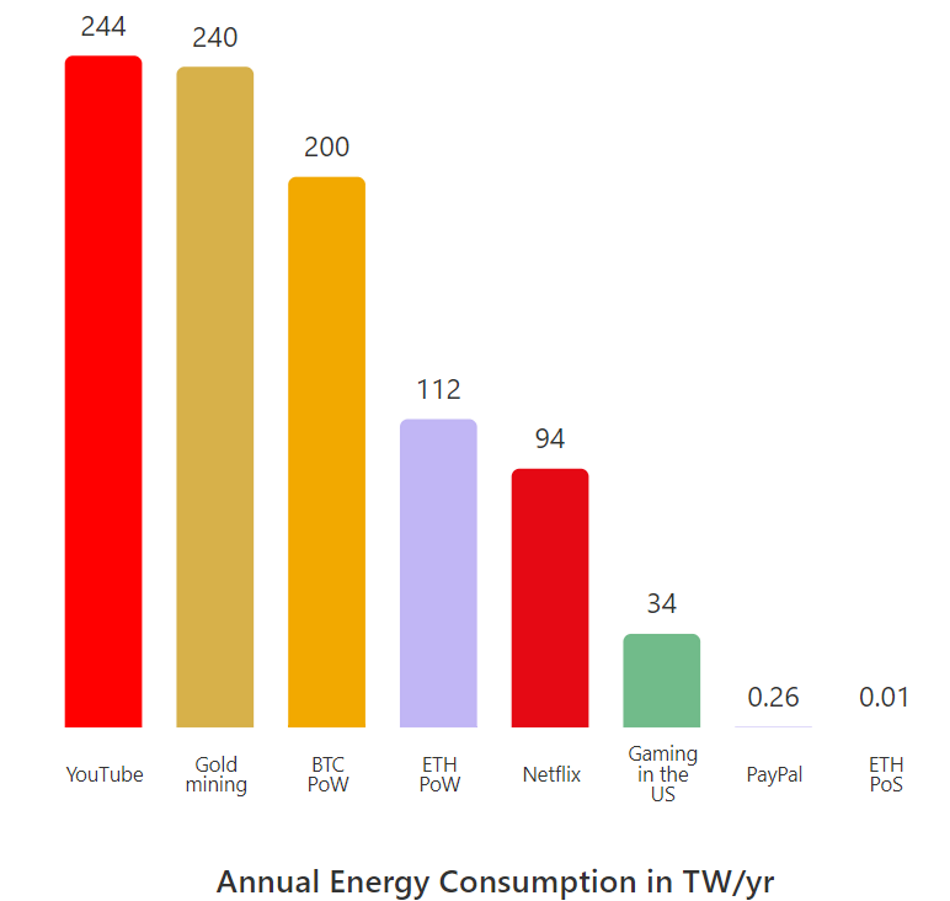
The estimated annual energy consumption in TWh/yr for various industries. Source: ethereum.org
Bitcoin is not a foreign currency
The Australian Government confirmed last week that it would introduce legislation to ensure Bitcoin would continue to be treated as an asset for capital gains purposes, and not as a foreign currency. The issue came up as a result of El Salvador making BTC legal tender and therefore a candidate to be treated under tax rules like other foreign currencies.
Almost half of young people in the US want crypto in retirement
A new survey by US asset manager Charles Swab found that about 46% of Gen Z, and 45% of Millennials surveyed want crypto investments to be part of their retirement savings plans. However, only 31% of Gen X agreed and just 11% of Boomers.
Bottoming out?
Numerous analysts are pointing to indicators that could mean Bitcoin and crypto markets are bottoming. IntoTheBlock metrics shows that Bitcoin hodlers in profit have risen to 54%.Glassnode reports that the accumulation trend score is mirroring the 2018-2019 bottom. Meanwhile Cointelegraph reported the MVRV Z-score, which measures Bitcoin’s price compared to its ‘fair value’ has dropped into a region that coincided with previous market bottoms. All that said, crypto has never experienced rising interest rates and high inflation plus a looming recession so history may not be a perfect guide this time around.
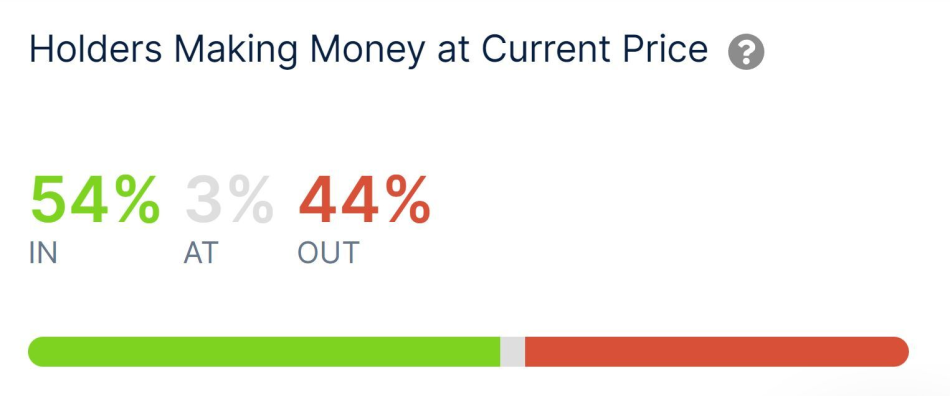
Source: intotheblock
Vitalik has thoughts on regs
ETH creator Vitalik Buterin has been sharing his thoughts on regulation of crypto on Twitter. He said it’s probably good that institutional interest has slowed and crypto ETFs keep getting knocked back as “the ecosystem needs time to mature before we get even more attention.” He also said he believes KYC is appropriate for exchanges, but not for DeFi as it’d “annoy users but do nothing against hackers. Hackers write custom code to interact with contracts already.” DeFi rules that he believes may be worth considering include limits on leverage, greater transparency around security (code audits etc) and implementing knowledge based tests for derivatives traders.
BTC and ETH are commodities: CFTC chair
The chairman of the Commodity Futures Trading Commission (CFTC) was asked this week whether the CFTC or Securities and Exchange Commission (SEC) would end up holding more power to regulate crypto. CFTC chair Rostin Behnam said, “It’s a pretty cynical view to suggest two agencies can’t figure it out and work together.” However he added that he believed that both Bitcoin and Ethereum are commodities, which would bring them under the CFTC’s auspices rather than the SEC’s.
World’s largest BTC miner insolvent
Core Scientific, one of the largest Bitcoin miners in the world, expects to drain its cash reserves by the end of this year. The Nasdaq-listed company announced so in an SEC filing. It had stated that its operating performance and liquidity had been severely impacted by the lengthened decrease in Bitcoin’s price, higher electricity costs, global hash rate increase, and the litigation with crypto lender Celsius Network and its affiliates. As of Wednesday, the company held 24 Bitcoins and roughly US$26.6 million in cash, compared to 1,051 Bitcoins and US$29.5 million in cash a month ago.
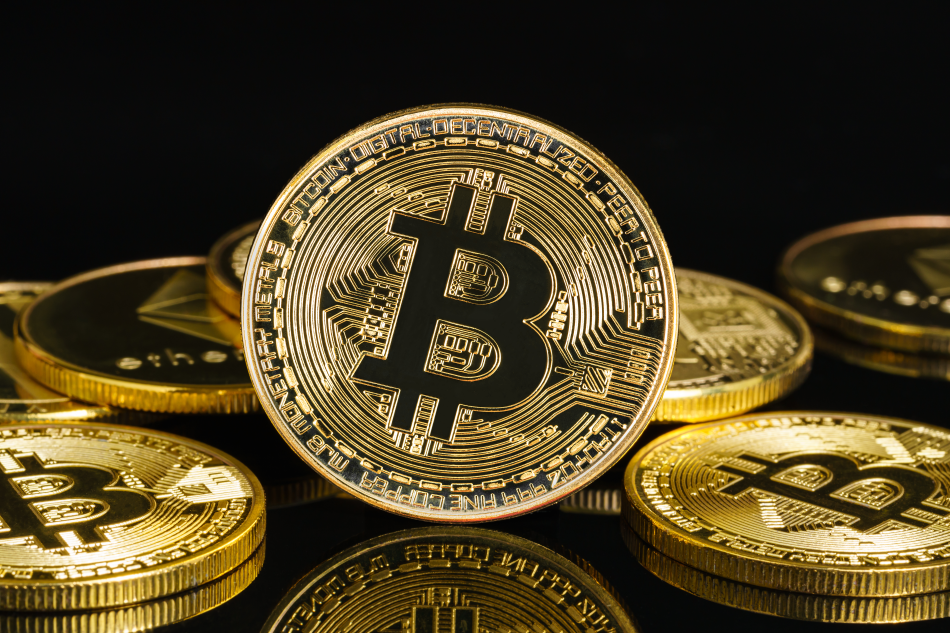
Could Hong Kong become China’s crypto sandbox?
Hong Kong’s government has proposed allowing retail investors to trade in crypto and crypto related ETFs – a change to its previous plan that set out to limit trading to just professional investors with more than A$1.6 million in liquid assets. Its crypto unfriendly stance has reportedly seen a number of crypto businesses move to more crypto friendly territories like Singapore and Dubai. Financial Secretary Paul Chan said in a keynote speech at the Hong Kong Fintech Week conference that regulators will start a consultation process to give retail investors “a suitable degree of access” to virtual assets. The Government also issued a very positive policy statement that it was “open and inclusive towards the global community of innovators engaging in VA (virtual asset) businesses” and said it wants to balance protections while encouraging innovation. It is researching the legality of smart contracts and may review property rights for tokenised assets in future. While undoubtedly positive news, the plans have received a mixed response according to Forbes.
Meanwhile, in Singapore, The Monetary Authority of Singapore (MAS) proposed further regulatory measures regarding consumer risk as well as developments in stablecoins as a medium of exchange. The recently published proposals highlighted regulatory measures for DPT service providers to ensure proper business conduct and adequate risk disclosure to reduce the risk of consumers’ speculative trading in cryptocurrencies. For stablecoins, the current regulatory framework primarily addresses money laundering, terrorism financing, technology, and cyber risks. It will expand to ensure that regulated stablecoins are appropriately backed and audited. All measures will be included in the Payment Services Act.
Until next week Happy Trading!


